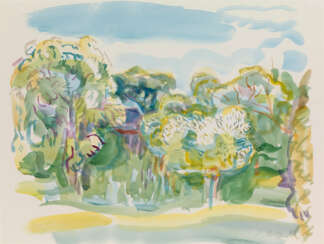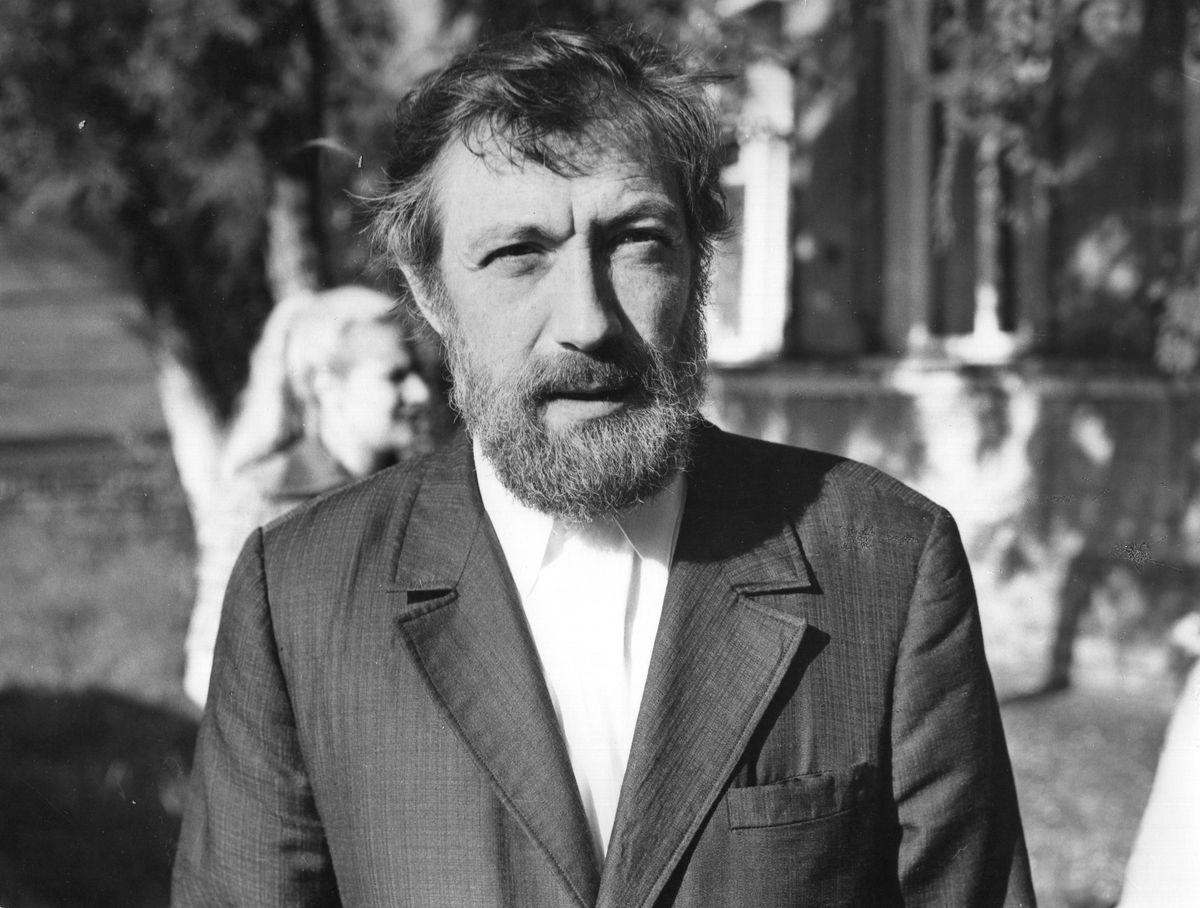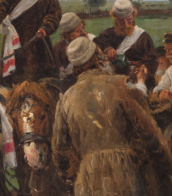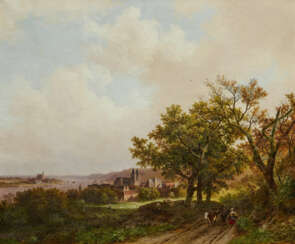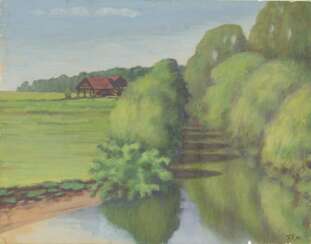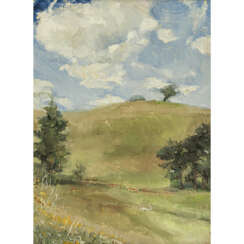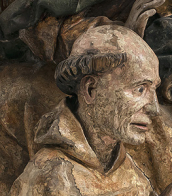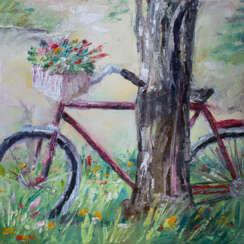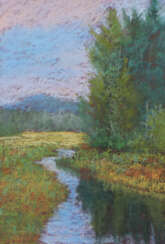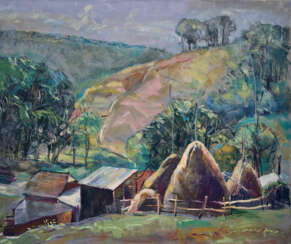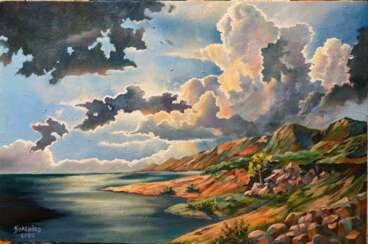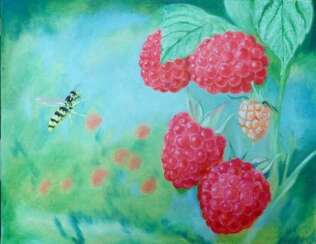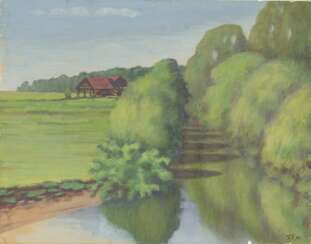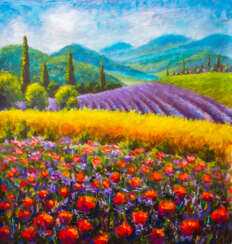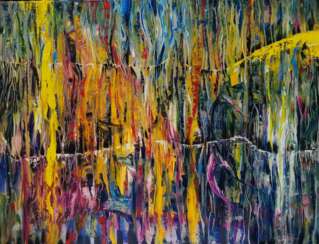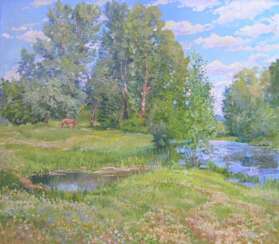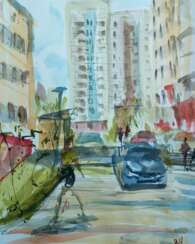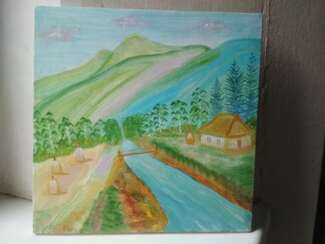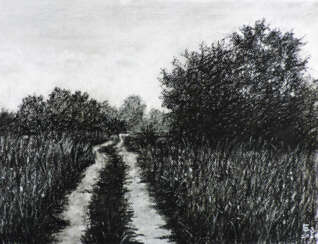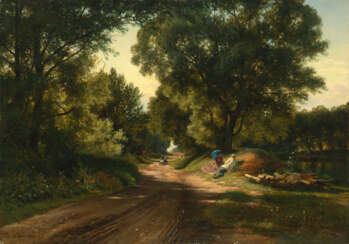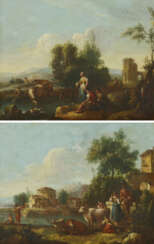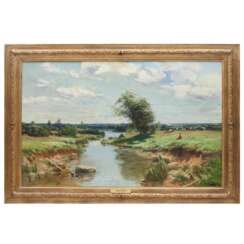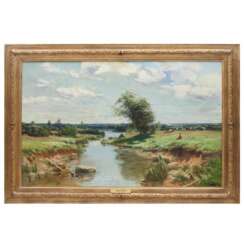summer landscape
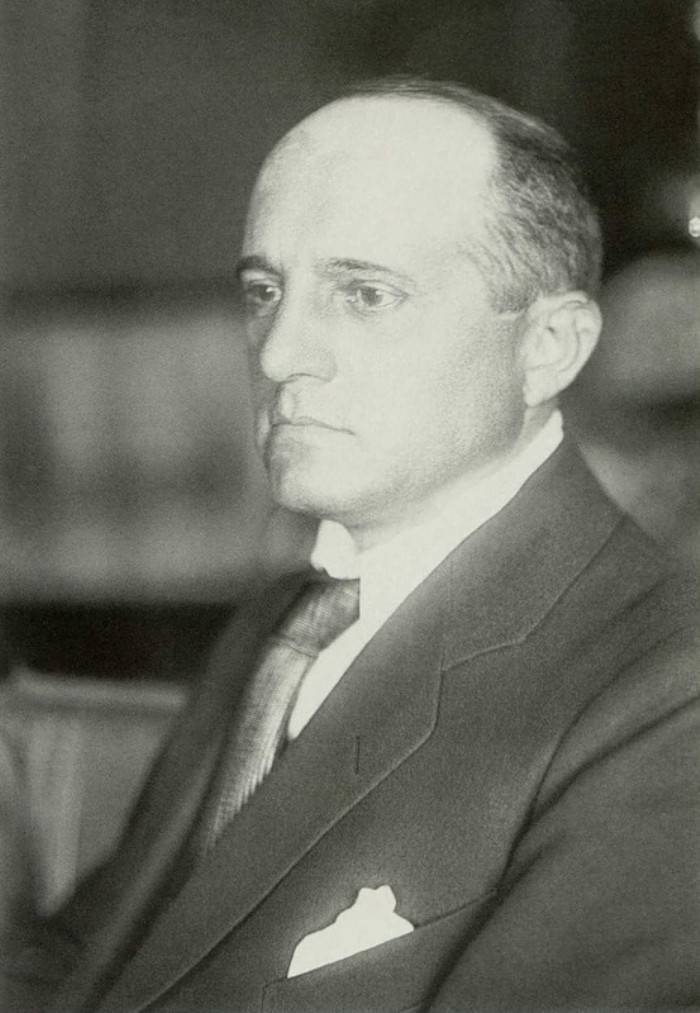
Stanislav Yulianovich Zhukovsky (Russian: Станислав Юлианович Жуковский) was a Polish-Russian painter, renowned for his contribution to the Impressionist movement and a member of Mir iskusstva. Born in 1873 in Yendrikhovtsy, Grodno Province, he showcased a remarkable journey from a student of Isaac Levitan at the Moscow School of Painting to becoming one of the most celebrated landscapists of his time. His works, deeply influenced by impressionistic methods and the Russian realist school, offered a vivid portrayal of Russian landscapes, pre-revolutionary sites, and the interiors of Russian estate houses.
Zhukovsky's art reflected a unique blend of realism and impressionism, capturing the subtle shifts in nature and the delicate nuances of light and color. His landscapes, often depicting the changing seasons and times of day, resonated with lyrical beauty and a sense of nostalgia for the old manor culture, making him a significant figure in the Silver Age of Russian culture. Despite his skepticism towards the Bolshevik revolution, which eventually led him to relocate to his ancestral homeland, Poland, in 1923, his legacy continued to flourish. His later years were marked by hardship, including his arrest and death in a prisoner transit camp during the German occupation of Poland in World War II.
Zhukovsky's artworks, such as "A Country House at Dusk in Winter" and "Interior With Samovar," are celebrated for their atmospheric depth and the masterful use of color and light, embodying the spirit of Russian impressionism. His influence extended beyond his canvases, as he mentored future luminaries like Liubov Popova and Vladimir Mayakovsky.
For collectors and experts in art and antiques, Zhukovsky's oeuvre represents a poignant exploration of the Russian landscape and cultural identity, rendered with a sensitive, impressionistic touch. His works, preserved in museums and private collections, continue to inspire and captivate audiences with their timeless beauty and emotional depth.
To stay informed about new discoveries, exhibitions, and auction events related to Stanislav Yulianovich Zhukovsky, sign up for updates. This subscription ensures that you won't miss the opportunity to engage with the legacy of this remarkable artist, whose work captures the essence of a pivotal era in Russian art history.
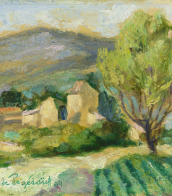

Barend Cornelis Koekkoek was a Dutch landscape artist and lithographer.

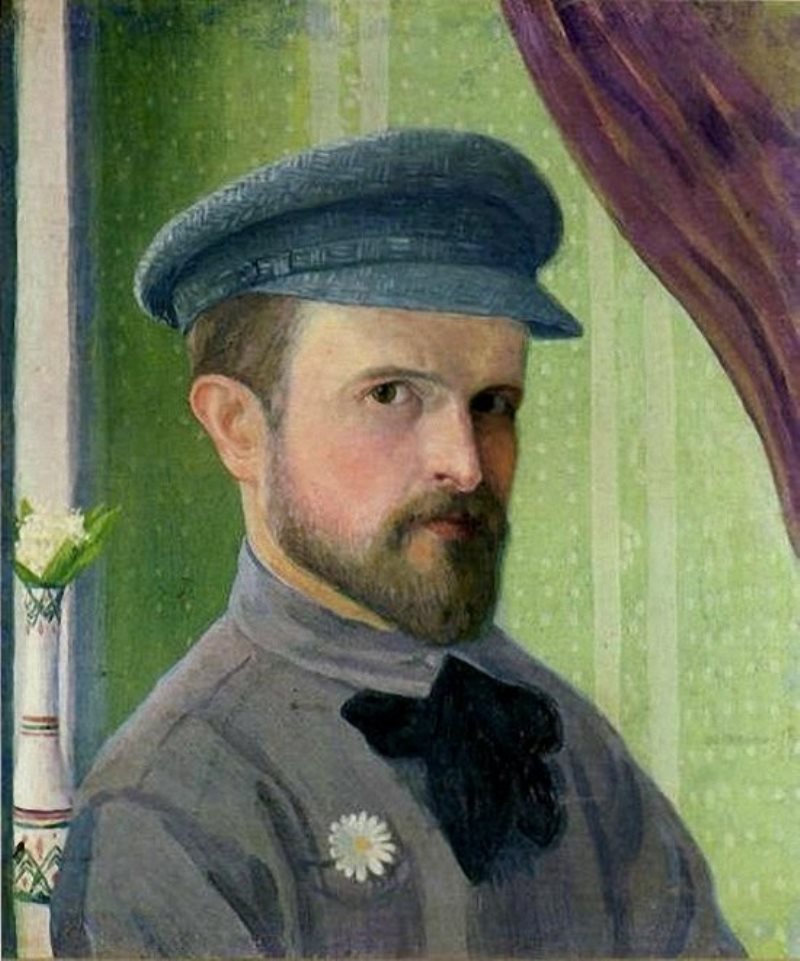
Ivan Vasilievich Kliun (Russian: Иван Васильевич Клюн) was a seminal figure in the Russian Avant-Garde movement, a painter, sculptor, and art theorist associated with Suprematism, a movement that sought to break down art into its basic geometric components. Born in Bolshiye Gorki, Kliun was deeply involved with the avant-garde circles that revolutionized Russian art in the early 20th century. His journey into the art world took him through studies in Kiev, Warsaw, and Moscow, culminating in a long-standing collaboration and friendship with Kazimir Malevich.
Kliun's artistic contributions were vast, ranging from his exploration of color theories to his pioneering Suprematist works that featured geometric shapes against stark backgrounds. Despite the changing tides of political and artistic favor in Soviet Russia, Kliun remained committed to his abstract and purist visions, even when abstraction fell out of favor with the Soviet authorities in the late 1920s.
His works, characterized by a unique integration of light and color to enhance the depth and intensity of the abstract forms, are significant for their experimental approach to Suprematism. Unlike many of his contemporaries who shifted towards Socialist Realism under state pressure, Kliun continued his abstract explorations discreetly. Today, his works are recognized for their innovation and contribution to the avant-garde movement, with pieces displayed in prestigious collections like the Costakis collection and international exhibitions.
For enthusiasts and collectors interested in the avant-garde movement and Kliun's groundbreaking work, staying updated on exhibitions and sales of his art is essential. Sign up for updates to stay informed about new product sales and auction events related to Ivan Vasilievich Kliun and explore the depths of Russian Avant-Garde art.
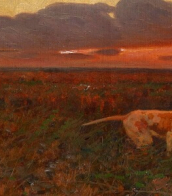
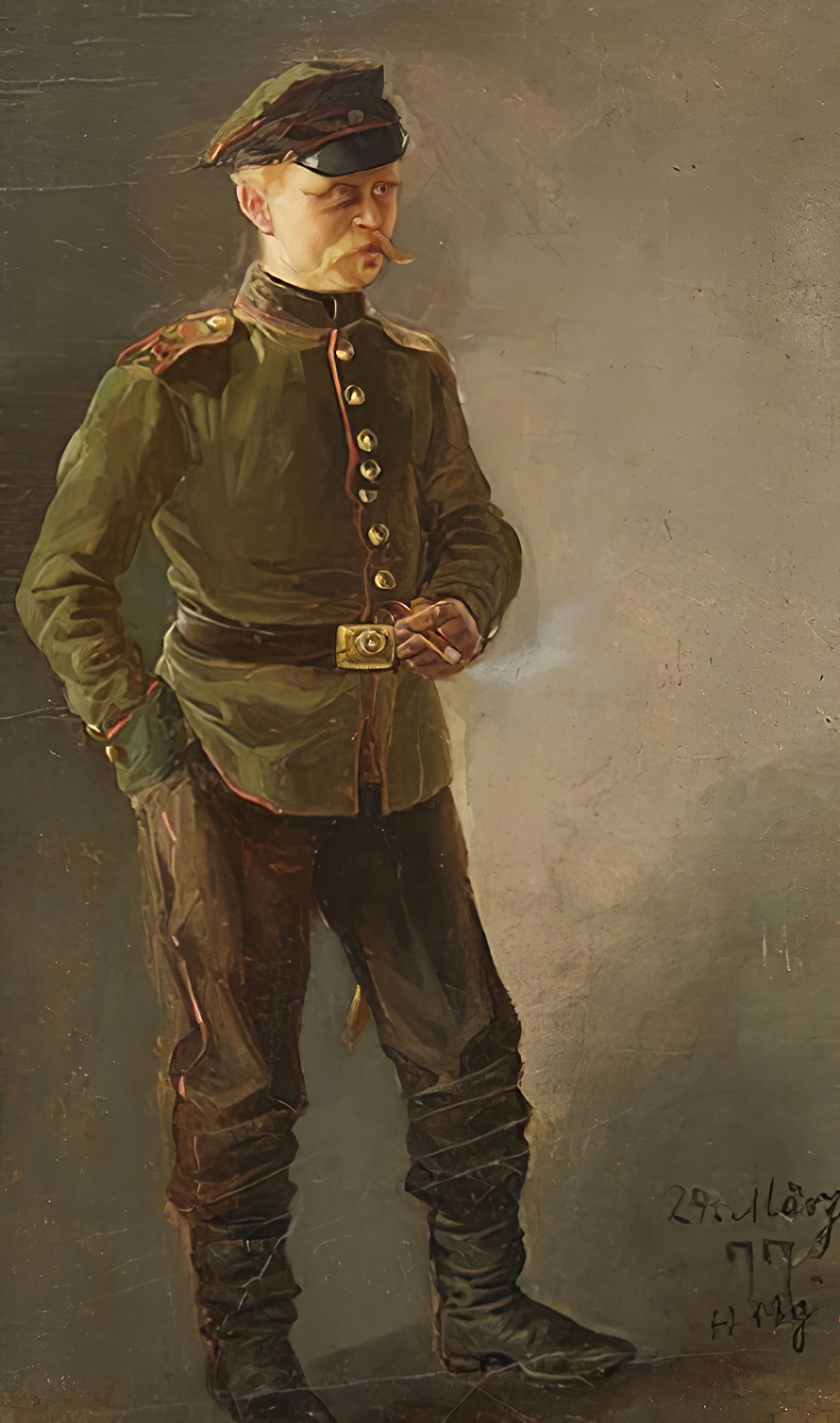
Hugo Mühlig was a German Impressionist painter. From 1881, he lived in Düsseldorf as a painter of landscapes and genre scenes.

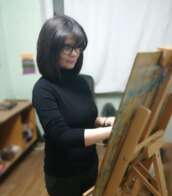
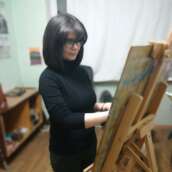


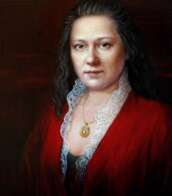
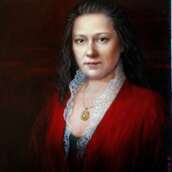
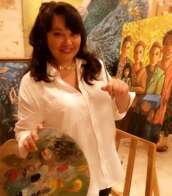


Ivan Vasilievich Kliun (Russian: Иван Васильевич Клюн) was a seminal figure in the Russian Avant-Garde movement, a painter, sculptor, and art theorist associated with Suprematism, a movement that sought to break down art into its basic geometric components. Born in Bolshiye Gorki, Kliun was deeply involved with the avant-garde circles that revolutionized Russian art in the early 20th century. His journey into the art world took him through studies in Kiev, Warsaw, and Moscow, culminating in a long-standing collaboration and friendship with Kazimir Malevich.
Kliun's artistic contributions were vast, ranging from his exploration of color theories to his pioneering Suprematist works that featured geometric shapes against stark backgrounds. Despite the changing tides of political and artistic favor in Soviet Russia, Kliun remained committed to his abstract and purist visions, even when abstraction fell out of favor with the Soviet authorities in the late 1920s.
His works, characterized by a unique integration of light and color to enhance the depth and intensity of the abstract forms, are significant for their experimental approach to Suprematism. Unlike many of his contemporaries who shifted towards Socialist Realism under state pressure, Kliun continued his abstract explorations discreetly. Today, his works are recognized for their innovation and contribution to the avant-garde movement, with pieces displayed in prestigious collections like the Costakis collection and international exhibitions.
For enthusiasts and collectors interested in the avant-garde movement and Kliun's groundbreaking work, staying updated on exhibitions and sales of his art is essential. Sign up for updates to stay informed about new product sales and auction events related to Ivan Vasilievich Kliun and explore the depths of Russian Avant-Garde art.
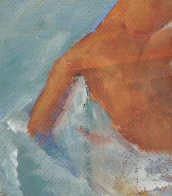




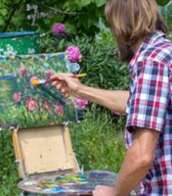
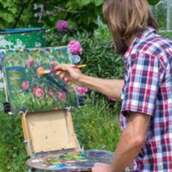


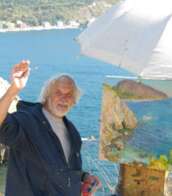
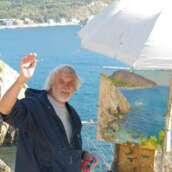




.jpg)
Ivan Ivanovich Shishkin (russian: Ива́н Ива́нович Ши́шкин), a Russian Artist, stood out in the 19th century for his mastery in landscape painting, immortalizing Russia's vast forests and nature through his precise and detailed work. His specialization in painting, coupled with a deep appreciation for his homeland's natural beauty, positioned him as a pivotal figure in Russian culture and art.
Shishkin's technique, characterized by its attention to detail and use of light, brought the Russian wilderness to life on canvas. His works, such as "Morning in a Pine Forest" and "The Rye Field," are celebrated for their realism and ability to evoke the spirit of Russia's landscapes. These paintings, held in prestigious museums like the Tretyakov Gallery in Moscow, serve not only as artistic achievements but also as cultural artifacts that offer insight into the Russian soul.
For art collectors and experts, Shishkin's oeuvre represents an intersection of artistic mastery and cultural heritage. His contributions to the world of painting continue to inspire and captivate audiences, making his works highly sought after in the realms of art collection and preservation.
We invite enthusiasts and connoisseurs to sign up for updates on new product sales and auction events related to Ivan Ivanovich Shishkin. This subscription is your gateway to owning a piece of Russian art history and staying informed about opportunities to acquire works by this illustrious painter.

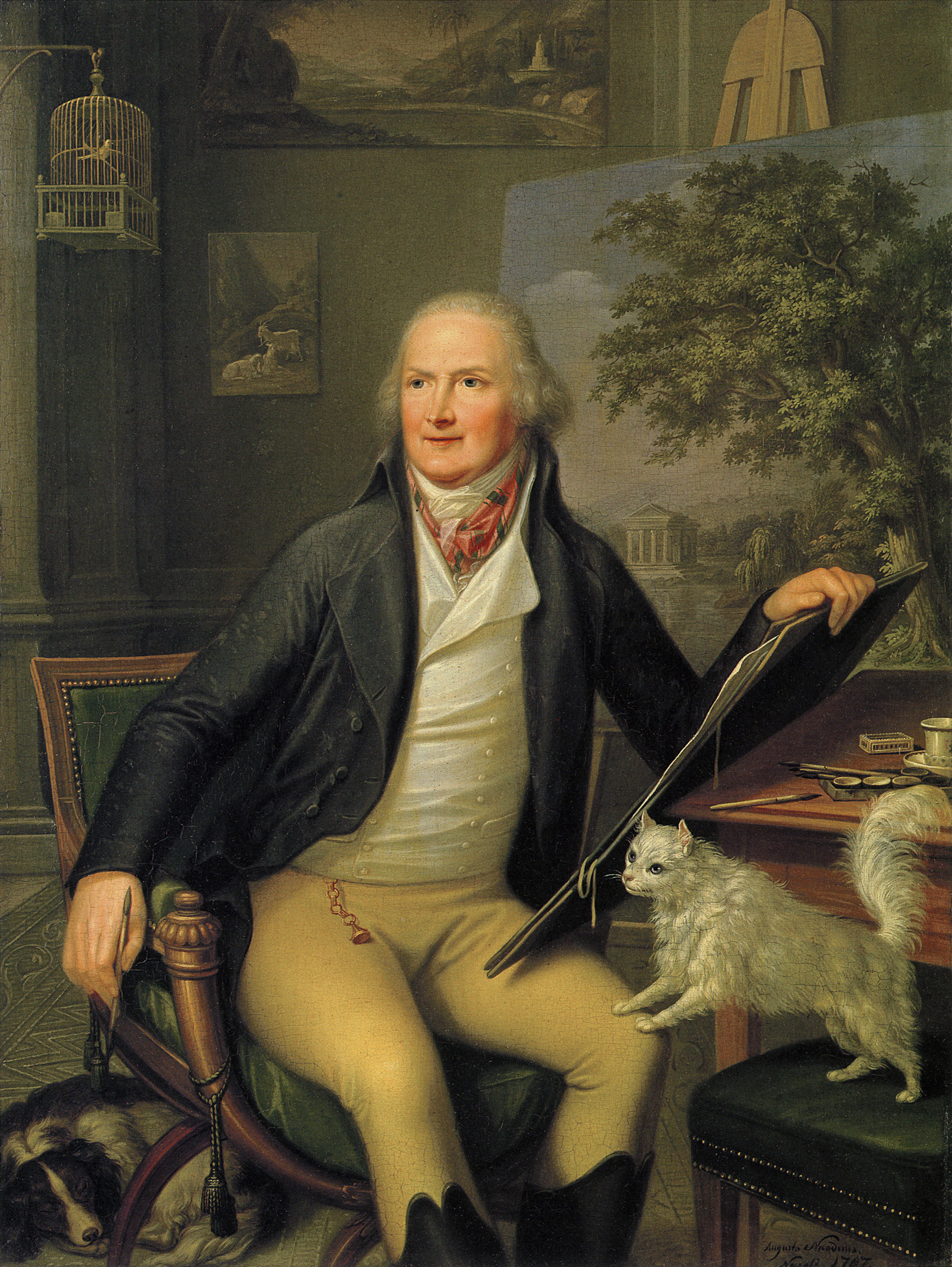
Jakob Philipp Hackert was a German painter of the second half of the 18th and early 19th centuries. He is known as a landscape painter and printmaker, a representative of neoclassicism and romanticism.
Hackert reached the peak of creative activity in 1770-1780. He was recognized by the European aristocracy, and for a time served as court painter to King Ferdinand IV of Naples, as well as receiving commissions from representatives of the Russian imperial family, such as Empress Catherine II and the heir to the throne, Paul Petrovich. His work, according to critics, was characterized by high craftsmanship and aristocratic elegance.

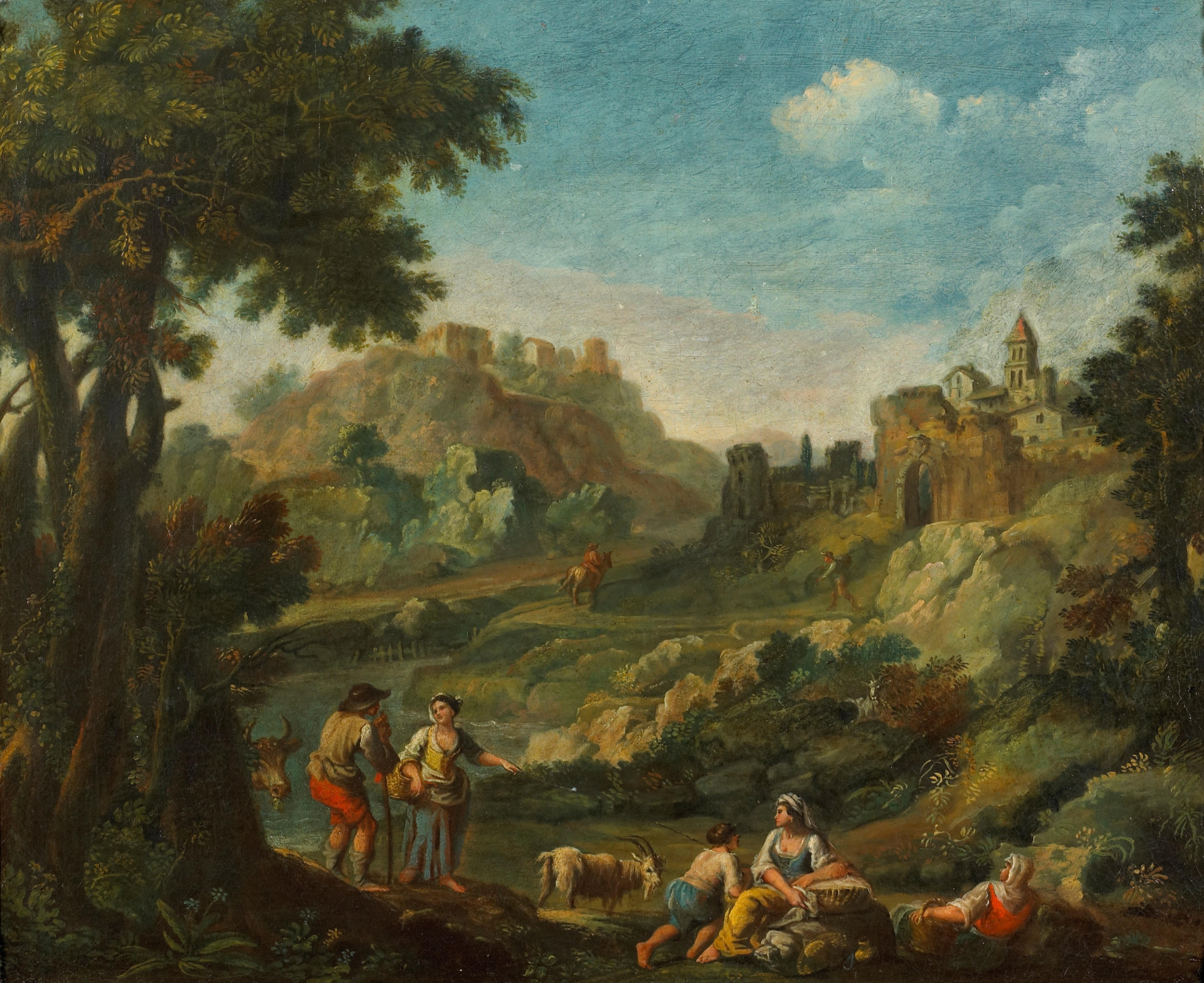
Giuseppe Zais was an Italian painter of landscapes (vedutisti) who painted mostly in Venice.






